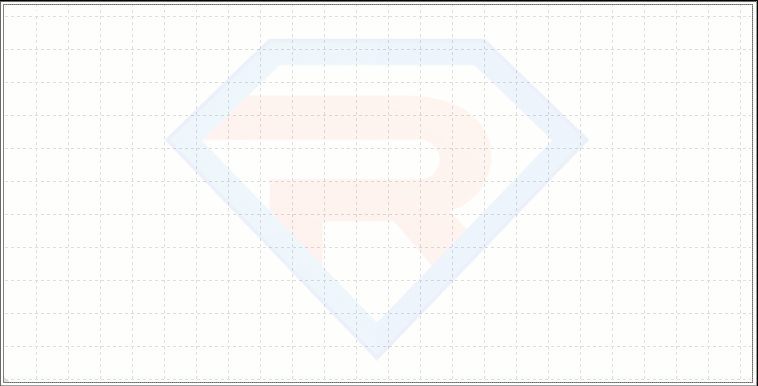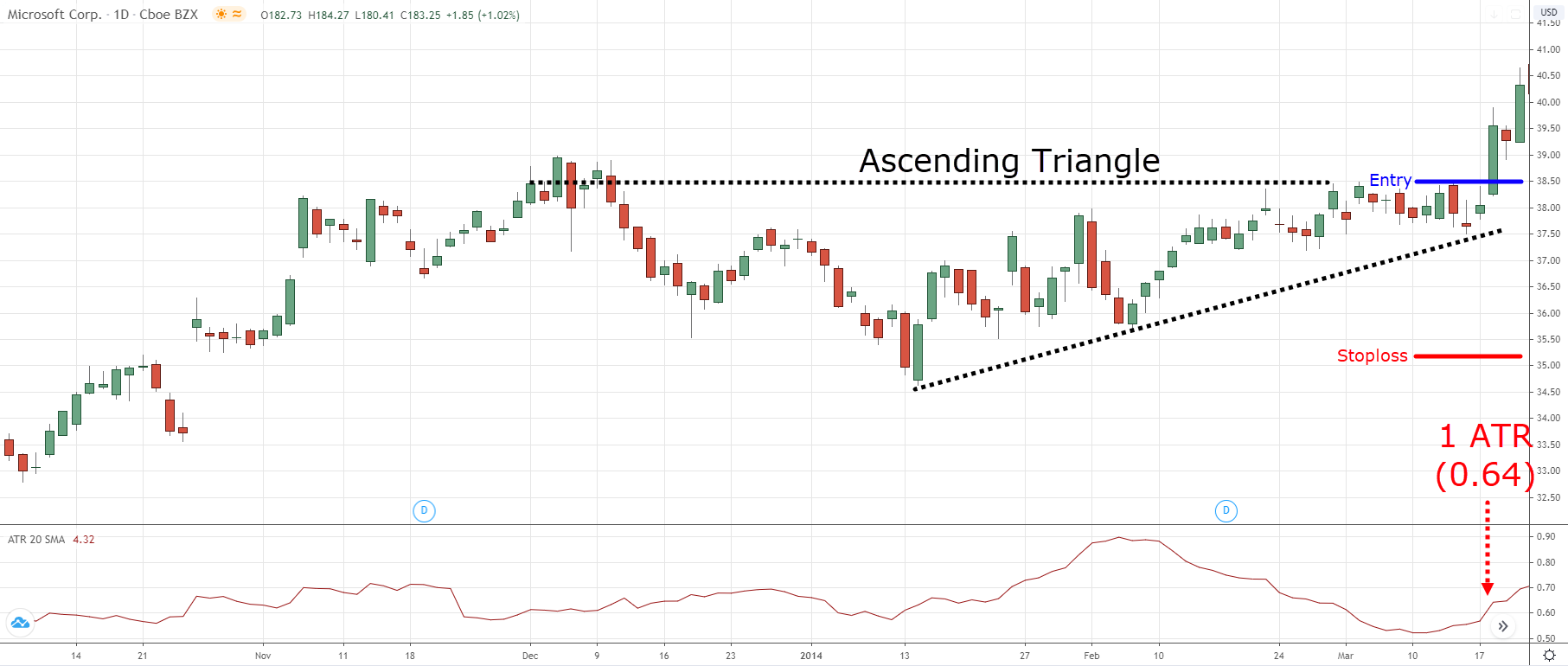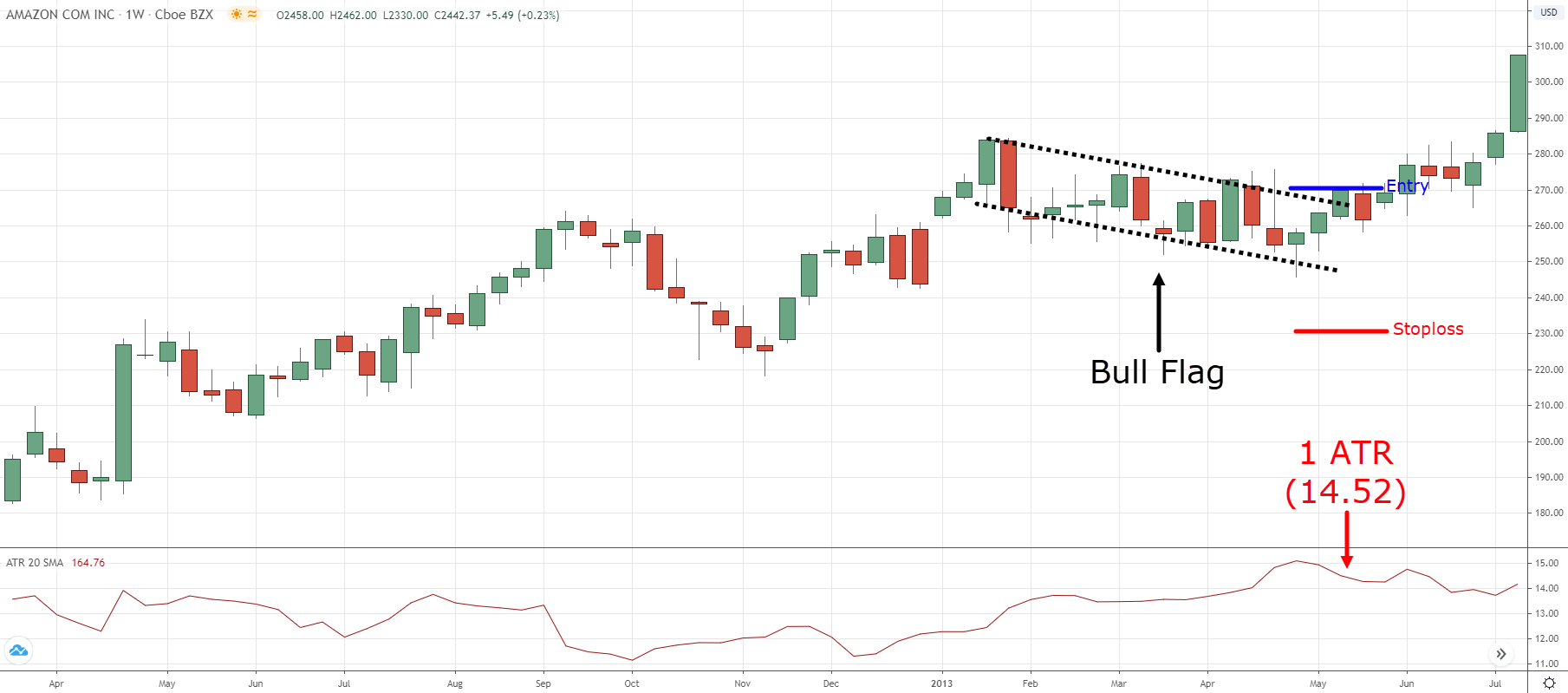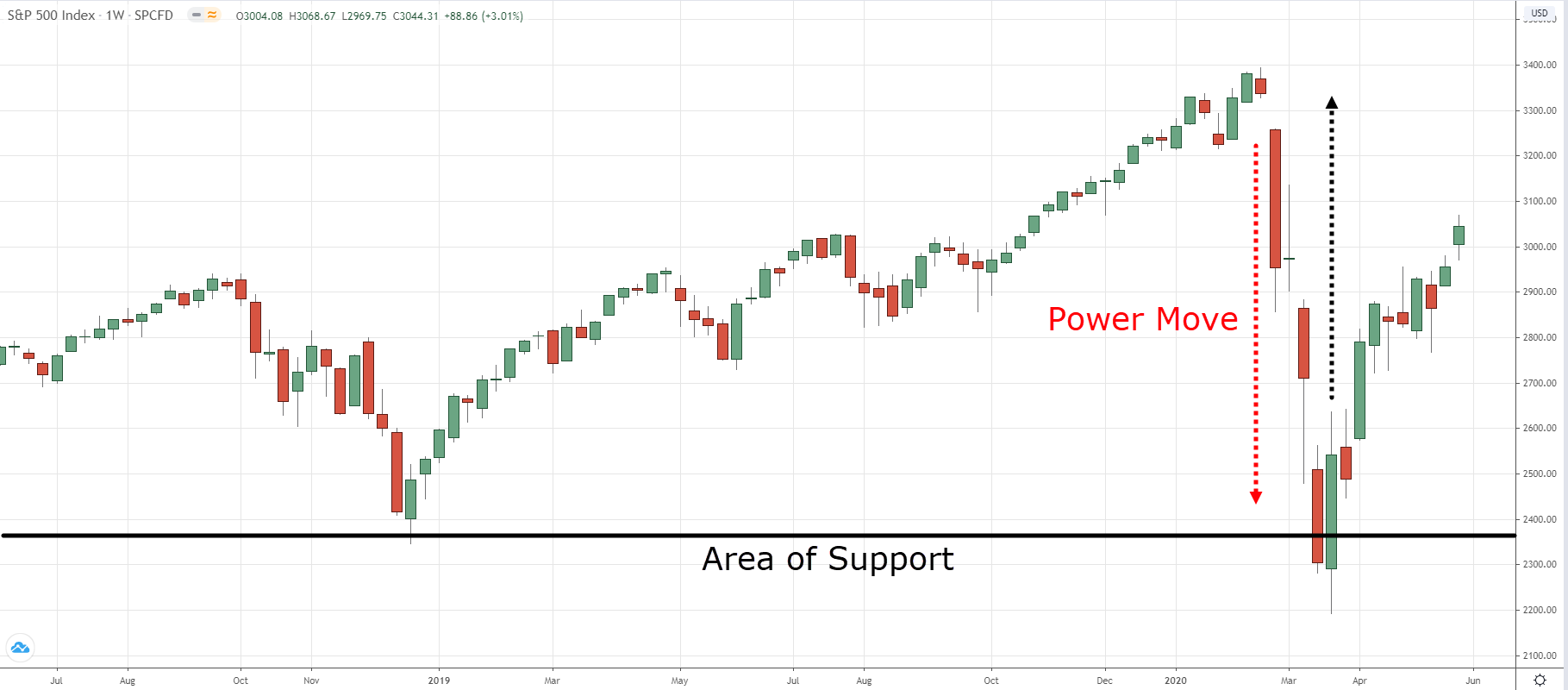I’m sure you can agree the US stock market is in a long-term uptrend.
Here’s the chart of the S&P 500 since 1998 to prove my point…
Yes, we have dips, recessions, and even bear markets along the way but, in the grand scheme of things, stocks tend to move higher.
Now if you know a market has a bias to move higher, then what should you do?
Be a buyer, of course!
But the question is…
How do you know when exactly to buy a stock?
Well, that’s where stock chart patterns could help, and you’ll learn more about it later.
But first…
Don’t trade stock chart patterns until you read this…
Many traders make the mistake of thinking all stock chart patterns are the same.
After all, a bear flag is a bear flag, right?
That’s not true, because the context of the market matters.
I’ll explain…
As you know, the stock market is in a long-term uptrend. But in the short-term, you’ll experience bear markets or recessions. And in such market conditions, a stock price is likely to go down, not up.
This means when you trade stock chart patterns, you want to buy when the overall market is in an uptrend (not in a downtrend).
And one way to filter for such market conditions is this…
You buy only when the index is above the 100-week moving average, or else remain in cash.
Next…
In a bull market, you easily have hundreds of stocks which are in an uptrend.
So now the question is…
Which stocks should we focus on?
According to academic research[i], stocks which exhibit strong momentum over the last 12 months tend to continue higher in price.
So, when we have many stocks to choose from, we’ll focus on stocks which have increased the most in price over the last 50 weeks.
And one way to filter for the strongest stocks out there is…
Focus on buying stocks with the highest rate of change (ROC) values over the last 50-weeks.
At this point:
You’ve learned why market conditions matter, how to filter for bull markets, and which stocks to focus on.
Moving on, you’ll discover when exactly to buy a stock using stock chart patterns so you can better time your entries.
Read on…
Stock chart pattern #1: Ascending triangle
The ascending triangle is a bullish chart pattern that signals the buyers are in control.
Here’s how to identify one:
- Look for a strong trending move higher (this is the “stronger leg” of the trend)
- Three higher lows into resistance, or swing high
- When forming the higher lows, the range of the candles should be small which signals low volatility in the markets
And here’s how an ascending triangle looks like…

Moving on…
Why is the ascending triangle a bullish chart pattern?
The buyers are willing to buy at higher prices
Normally, traders want to buy low and sell high.
But when you have a series of higher lows, it shows that buyers are getting desperate and willing to buy at higher prices (even at resistance).
A cluster of stop loss above the resistance area
Above resistance, there’s likely a cluster of stop loss orders from short traders. When these orders get triggered, it creates buying pressure (as their buy stop orders are hit).
Momentum traders
Momentum traders (or breakout traders) will buy when the price breaks out of a key level like resistance, 52-week highs, etc.—when that happens, it fuels more buying pressure.
Note: Although the ascending triangle is a bullish stock chart pattern, still, there’s no guarantee it will move higher after a breakout—and likewise for other patterns that you’ll come across.
Now you’re probably wondering:
“How do I trade the ascending triangle stock chart pattern?”
This is the easy part.
You can place a buy stop order above the highs of resistance, and if the price trades above it, you’ll get into a long trade.
What about stop loss?
Well, you can set it 1 ATR below the previous swing low.
Here’s an example…
Microsoft Daily Timeframe:
Now, the reason for 1 ATR below the swing low is because if the price reaches that level, the ascending triangle chart pattern is invalidated and there’s no reason to stay in the trade any longer.
Pro Tip:
You want to trade during a low volatility environment because you can have a tighter stop loss which allows you to put on a larger position size (for the same level of risk).
This means if volatility does expand in your favour, you can yield a favourable risk-to-reward on your trade (possibly 1-to-5 or more).
Note: This concept can be applied to all stock chart patterns.
Stock chart pattern #2: Breakout with a buildup
The breakout with a buildup is another bullish chart pattern that signals the buyers are in control.
Here’s how it works…
- The price has to re-test resistance or swing high and get rejected from it
- The price re-test resistance again but this time around, it forms a buildup at resistance (which looks like tight consolidation)
- When forming the buildup, the range of the candles should be small which signals low volatility in the markets
An example:

So, what’s the significance of a breakout with a buildup?
If you think about it, the breakout with a buildup is a variation of the ascending triangle pattern.
The only difference is instead of higher lows into resistance, we simply have a buildup formed at resistance.
So, the significance of this pattern is similar to the ascending triangle which is…
- Buyers willing to buy at higher prices
- A cluster of stop loss above resistance
- Momentum traders buying breakouts
Likewise, trading the breakout with a buildup chart pattern is similar to the ascending triangle.
You can buy when the price breaks out of resistance with a buy stop order.
As for stop loss, you can place it 1 ATR below the lows of the buildup.
Here’s an example…
Amazon Daily Timeframe:
Next…
Stock chart pattern #3: The bull flag
The bull flag is a trend continuation chart pattern which shows the buyers are in control.
Unlike the earlier chart patterns which are formed below resistance, the bull flag pattern is usually formed in an existing uptrend.
Here’s how it works…
- Look for a strong trending move higher (this is the “stronger leg” of the trend)
- When the retracement comes, it shouldn’t exceed more than 30% of the previous trending move
- On the retracement, the range of the candles should be small which signals low volatility in the markets
Here’s an example:

Now…
There are many bullish chart patterns out there. But what makes the bull flag pattern attractive is you can have a tighter stop loss on your trade (as your stop loss can go below the lows of the bull flag pattern).
This means you can put on a larger position size for the same level of risk—which improves your risk to reward on the trade.
Next…
Trading the bull flag pattern is straight forward.
You can buy when the price breaks out of resistance with a buy stop order and have your stop loss 1 ATR below the lows of the flag pattern.
Here’s an example…
Amazon Weekly Timeframe:
And this brings me to the final stock chart pattern…
Stock chart pattern #4: The false break
Unlike the earlier chart patterns which focus on buying breakouts, the false break pattern is a reversal chart pattern.
Here’s how it works…
- Look for a strong bearish momentum move into support
- The price has to trade below the lows of support
- Within the next 1 – 3 candles, the price rallies strongly and closes back above support
Here’s what I mean:

So, what’s the significance of the false break pattern?
When you get a strong bearish move into support, it’ll attract bearish traders to short the break of support.
And where would they place their stop loss?
Chances are, it’ll be above the previous day high, or the nearest swing high.
This means if the market makes a reversal higher, it’ll hit this cluster of stop loss which fuels further buying pressure.
That’s why you’ll notice the market makes a strong move lower, followed by an equally strong reversal towards the upside.
And that’s not all….
Because it’s proven statistically that stocks have a mean-reverting behaviour.
This means if they drop “too much too fast”, there’s a high chance of a rebound in the subsequent days—and the false break is one such pattern to capture the rebound.
Now you’re probably wondering:
“So how do I trade the false break pattern?”
Simple.
You can look to buy on the next day’s open and have your stop loss 1 ATR below the low of the candle.
Here’s an example…
Johnson & Johnson 4-Hour Timeframe:
Bonus tips
At this point, you’ve discovered 4 stock chart patterns that work.
But before you go, I want to give you a few trading tips that will help you better time your entries and improve your results, fast.
Let’s get started…
The longer it ranges, the harder it breaks
When the market is in a range, it’ll attract traders from both sides to trade within the range. Bullish traders will buy at support and bearish traders will sell at resistance.
And the longer a market is in a range, the larger the cluster of stop orders will be formed below support and above resistance.
(Because bullish traders would place their stops below support and bearish traders would place theirs above resistance.)
This means if the price breaks above resistance, you can expect a cluster of buy stop orders to be triggered (from short traders) which adds more buying pressure to push the price higher.
That’s why the longer it ranges, the harder it breaks.
Pro Tip:
As a guideline, you can look for a range that took 80 candles or more to form.
How to better time your breakout trades using this one simple technique
When it comes to breakout trading, this is one of the top questions I get from traders…
“How many candles should the buildup be?”
Now, I don’t have the exact number to it.
But what I’d like to see is for the 20MA to touch the lows of the buildup.
When it does, then it’s a sign the market is getting ready to make a move.
But if the 20MA has not reached the lows of the buildup, then I’m hesitant to place a buy stop order and will wait till the 20MA has caught up with the price.
The false break pattern: How to identify high probability trading setups
When you’re trading the false break pattern, you want to see a strong momentum move into a level.
Here’s why…
When you get a strong momentum move lower, it’s because there isn’t enough buying pressure to hold up the prices—that’s why the price has to decline lower to attract buyers.
Now the entire “down move” is called a liquidity gap (a lack of interest) since not many transactions took place on the decline.
This means the market can easily reverse in the opposite direction due to a lack of interest around the price level.
That’s why you often see a strong move down into Support, and then BOOM, the price does a 180-degree reversal.
Here’s an example…
S&P 500 Weekly Timeframe:
This finding can be further validated by Larry Connors in his book, Buy The Fear, Sell The Greed, which shows how a “deeply oversold” stock (above the 200MA) is likely to rebound higher.
Conclusion
So here’s what you’ve learned:
- You want to buy stocks when the overall market is in an uptrend, and stay in cash during bear markets
- Focus on buying strong momentum stocks as they are likely to outperform the markets
- You can use stock chart patterns like ascending triangle, breakout with a buildup, bull flag, and false break to time your entries
- When trading breakouts, you want the 20MA to touch the lows of the buildup before buying the breakout
Now here’s what I’d like to know…
Which stock chart patterns do you trade?
Leave a comment below and share your thoughts with me.
[i] Returns to Buying Winners and Selling Losers – Jegadeesh and Titman








Great information Rayner! Listening to you, I will be an excellent trader.
You are most welcome, Frantz!
As Always, Simple and Clear Explanation !!!!
That’s the goal, Andre!
Your coaching is great. Can you make a video on this? Since I started following your coaching I have been improving daily
Awesome, Foncho!
Great information
You are welcome, Shri!
Good and insight article! Really enjoy reading it ..
Just to clarify the example on false breakout ..” You can look to buy on the next day’s open and have your stop loss 1 ATR below the low of the candle.”
Are we supposed to look to sell at open and place stop loss 1 Atr above high based on the pictorial example …
Thank you for sharing 👍👍
Hey there Denn, that’s right!
Personally, I’ll trade the ascending triangle and consolidation patterns at break out as this indicates the market getting ready to move. Never took into consideration the bull flag and false break patterns which could be an additional information in determining a better entry.
Besides, my intention is to trade using only price action techniques and the book you have written on this can’t be accessible to me in Nigeria. And when I checked Amazon for the ebook, I couldn’t get to process the purchase because the format wasn’t available.
Kindly see to this so that I can purchase the soft copy.
Thanks
Hey Chimaobi,
Please write to support.
support@tradingwithrayner.com
Cheers.
Im unable to purchase here in Nigeria please can’t there be any other alternative asides visa card and paypal
Amazing boss…..just true practical examples….much needed….stay blessed
I appreciate the kind words Darpan, stay blessed as well!
Hi, great content! Do you not use volume to confirm the breakouts? Or volume is not that important for this asset class? Thanks!
Hey there Paul, as of now Rayner does not use volume on his trades.
We don’t think that volume is “not important” but it’s just that Rayner doesn’t use it at the moment!
Strong bulls and strong bear
For sure!
Beginner, now learning your steps,we ll get there one-day,
I more of this. Thank you.
You’re welcome Joseph, keep building your skill up!
Can you recommend a good broker that allows the use of Tradingview on their platform
Hey there Ini, choosing a broker can depend on which type of markets are you using, if you wish to trade US Stocks, however, you can try out Interactive Brokers, TD Ameritrade, Charles Schwab, E-Trade
Thanks for your guidance and good teaching i almost use all patterns. As market move well it might be in Bear / Bull
which has been thought by you Thank you very much for educate me god bless you
I am your follower you make me understand in good way as i am your student & all of your teaching is good
Happy to hear that Rajiv!
Pls, can those your strategy can u apply it
to crypto trading because I’m a crypto trader.
Yes, it can apply to Crypto!
Usually I buy on breakout and at support. This guide is very helpful
I’m glad that this guide has helped you Srinivas!
Your coaching is great.help me alot to understand
I’m happy to hear that Mereseini!
You always hit the nail on the right spot. Thank for sharing this awesome precise information.
Thank you, Kelly!
We appreciate it!
I like your techniques ,,congratulations
Thank you, Abubakar!
More than better learning now it’s good me for using when current markets apply strategy thank you.
Delighted to hear that Akash, good luck!
Good I love it
Great to hear that Samuel!
Excellent information Sir
Thank you for the kind words, Patil!
Please create a videos is in Hindi language
We’ll try to consider it, Chetan!
👍
Bull flag
Thanks for sharing, Chuma!
Thanks for sharing a vital info,I am grateful. God bless.
You’re welcome!
Thanks for this article. Please write a followup on trading Long in a bear market as well.
You’re welcome, Jeff will try to consider it!
how about crypto coins? it’d be awesome to find an article like this but focused on crypto. Thanks!
Unfortunately, this blog is about stock trading, but the concepts can apply in crypto!